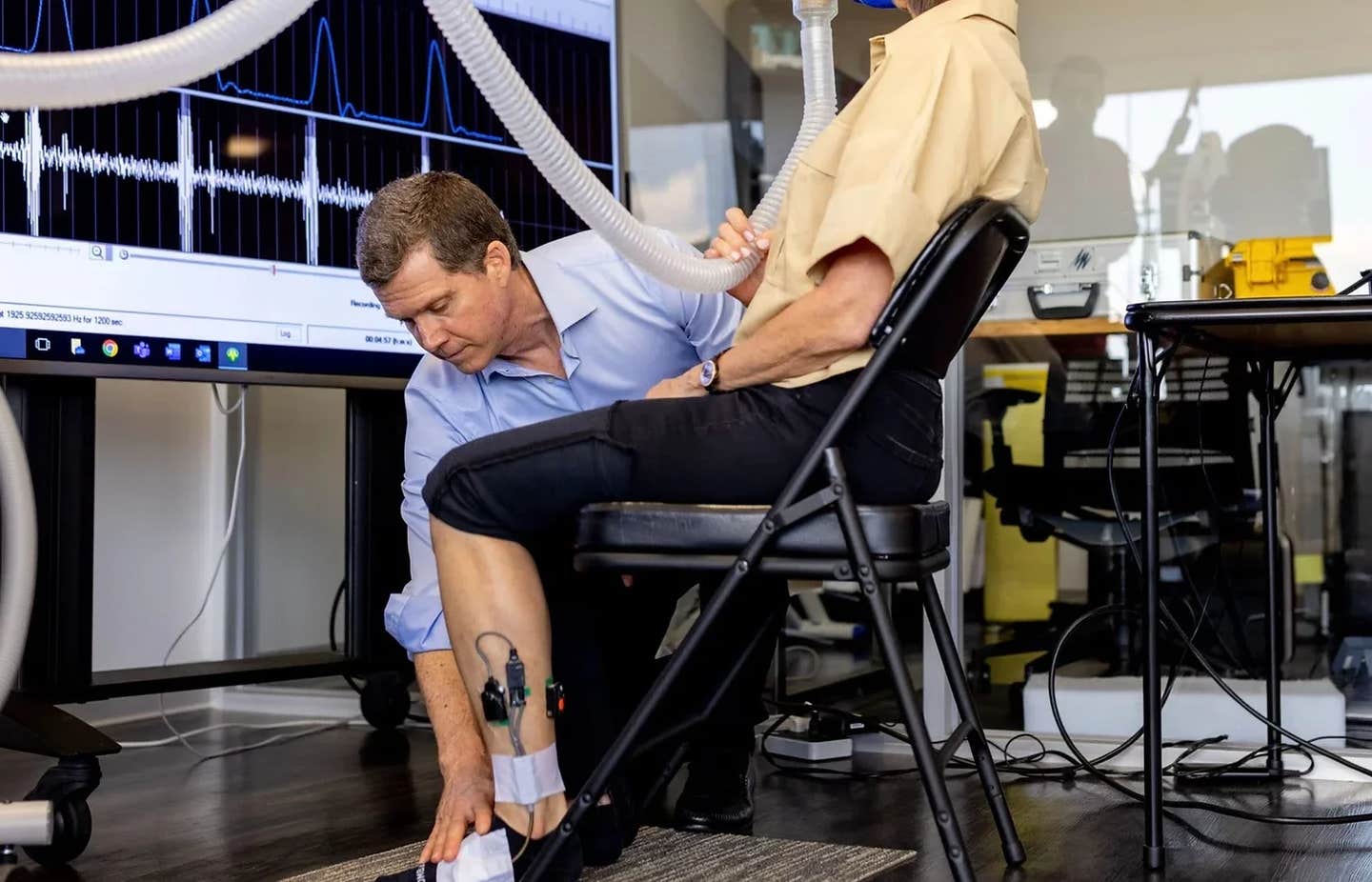Surprising muscle significantly increases metabolism and burns fat while sitting
Surprising new discovery challenges the traditional approach to combating the negative effects of a sedentary lifestyle.

An overlooked muscle in your calf may hold the key to better blood sugar and fat metabolism—without leaving your chair.(CREDIT: University of Houston)
A groundbreaking discovery by Marc Hamilton, professor of Health and Human Performance at the University of Houston, challenges the traditional approach to combating the negative effects of a sedentary lifestyle.
His research highlights the potential of the soleus muscle, which makes up only 1% of body weight but can significantly improve metabolic health when activated correctly. This revelation comes from the same expert who argued that "sitting too much is not the same as exercising too little."
Hamilton's innovative solution, the "soleus pushup" (SPU), is designed to elevate muscle metabolism for extended periods, even while sitting. The soleus muscle, located in the calf and extending from below the knee to the heel, is a posterior leg muscle that has been largely overlooked until now.
The findings, published in the journal iScience, suggest that the SPU can sustain an elevated oxidative metabolism, making it more effective at regulating blood glucose than popular methods like exercise, weight loss, and intermittent fasting. Oxidative metabolism, which uses oxygen to burn metabolites such as blood glucose or fats, relies on the immediate energy needs of the muscle in action.
"We never dreamed that this muscle has this type of capacity. It's been inside our bodies all along, but no one ever investigated how to use it to optimize our health, until now," Hamilton stated. "When activated correctly, the soleus muscle can raise local oxidative metabolism to high levels for hours, not just minutes, and does so by using a different fuel mixture."
Muscle biopsies revealed that the soleus uses minimal glycogen, preferring other fuels like blood glucose and fats. Typically, glycogen is the primary carbohydrate used in muscular exercise. "The soleus’ lower-than-normal reliance on glycogen helps it work for hours effortlessly without fatiguing during this type of muscle activity, because there is a definite limit to muscular endurance caused by glycogen depletion," Hamilton explained. "As far as we know, this is the first concerted effort to develop a specialized type of contractile activity centered around optimizing human metabolic processes."
When tested, the SPU showed remarkable whole-body effects on blood chemistry, including a 52% improvement in blood glucose levels and a 60% reduction in insulin requirement over three hours after consuming a glucose drink. Additionally, the SPU was found to double the normal rate of fat metabolism during fasting periods between meals, reducing levels of fat in the blood (VLDL triglyceride).
Related Stories
Building on years of research, Hamilton and his team developed the soleus pushup, which activates the soleus muscle in a unique way, distinct from standing or walking. The SPU increases oxygen consumption and is resistant to fatigue. To perform a soleus pushup, one must sit with feet flat on the floor and muscles relaxed.
The heel is then raised while the front of the foot remains stationary. Once the heel reaches its top range of motion, the foot is passively released to return to the starting position. This movement shortens the calf muscle while naturally activating the soleus through its motor neurons.
Although the SPU may look similar to walking, Hamilton emphasized that it is fundamentally different. "The soleus pushup looks simple from the outside, but sometimes what we see with our naked eye isn't the whole story. It’s a very specific movement that right now requires wearable technology and experience to optimize the health benefits," he noted. Future publications will aim to teach people how to perform this movement without the need for sophisticated laboratory equipment.
The researchers stress that the SPU is not just another fitness fad but a potent physiological movement leveraging the unique features of the soleus muscle. Hamilton believes this study could be a significant step toward addressing health problems associated with prolonged inactivity.
On average, Americans sit for about 10 hours a day, and excessive sitting has been linked to increased risks of heart disease, diabetes, dementia, and more. Over half of all American adults, and 80% of those over 65, are dealing with metabolic issues related to diabetes or prediabetes.
Hamilton highlighted the importance of addressing the low metabolic rate while seated, especially for individuals at high risk for age-related metabolic diseases such as metabolic syndrome and type 2 diabetes. "Inactive muscles require less energy than most people seem to understand," he said, calling it "one of the most fundamental, yet overlooked issues" in finding metabolic solutions to prevent some chronic diseases.
"All of the 600 muscles combined normally contribute only about 15% of the whole-body oxidative metabolism in the three hours after ingesting carbohydrate. Despite the fact that the soleus is only 1% of body weight, it is capable of raising its metabolic rate during SPU contractions to easily double, even sometimes triple, the whole-body carbohydrate oxidation," Hamilton explained.
"We are unaware of any existing or promising pharmaceuticals that come close to raising and sustaining whole-body oxidative metabolism at this magnitude," he continued.
Hamilton's research marks a significant advancement in understanding muscle metabolism and offers a promising new tool in the fight against the health risks associated with a sedentary lifestyle. The soleus pushup could be a game-changer, providing a simple yet powerful way to improve metabolic health while sitting.
Note: Materials provided above by the The Brighter Side of News. Content may be edited for style and length.
Like these kind of feel good stories? Get the Brighter Side of News' newsletter.
Joseph Shavit
Head Science News Writer | Communicating Innovation & Discovery
Based in Los Angeles, Joseph Shavit is an accomplished science journalist, head science news writer and co-founder at The Brighter Side of News, where he translates cutting-edge discoveries into compelling stories for a broad audience. With a strong background spanning science, business, product management, media leadership, and entrepreneurship, Joseph brings a unique perspective to science communication. His expertise allows him to uncover the intersection of technological advancements and market potential, shedding light on how groundbreaking research evolves into transformative products and industries.



